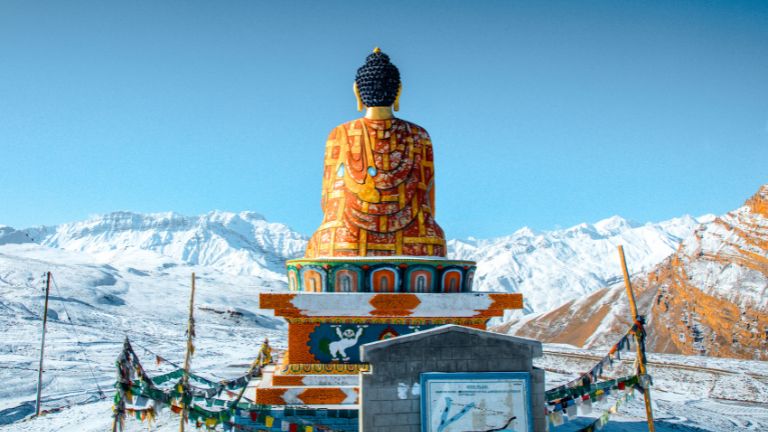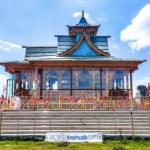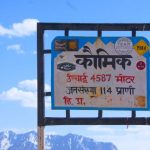Langza is one of India’s most remote villages, located in Himachal Pradesh state. Langza, a high-altitude village near the Spiti Valley headquarters of Kaza, is known for ancient marine fossils, spotting endangered animals, the warmth of the people, and its massive Buddha statue overlooking the Spiti Valley. Langza village’s scenery can captivate anyone. Langza is, in fact, the most beautiful town we’ve seen in the Spiti Valley. We got a firsthand look at how people live in Langza and how they coexist peacefully with nature. Their way of life is entirely in tune with the terrain’s harsh geography and weather. This blog will act as a guide for your visit to Langza village.
- About Village:
- About Langza Village Location:
- Langza Village's History:
- Activities in Langza Village include:
- Pay a visit to the statue of Langza Buddha.
- Walk around looking for endangered species.
- Take photos of the breathtaking scenery.
- Go on a fossil hunt
- In a homestay in Himachal Pradesh, you'll be able to interact with the locals.
- Interact with the locals to gain a better understanding of their culture.
- Indulge in some delectable Spitian cuisine.
- Go to the temple in the neighborhood.
- Hike up to the lakes of Tsonyeti and Chumo.
- Climb to the top of Chau Chau Kang Nilda (CCKN).
- F&Q's Langza Village
About Village:
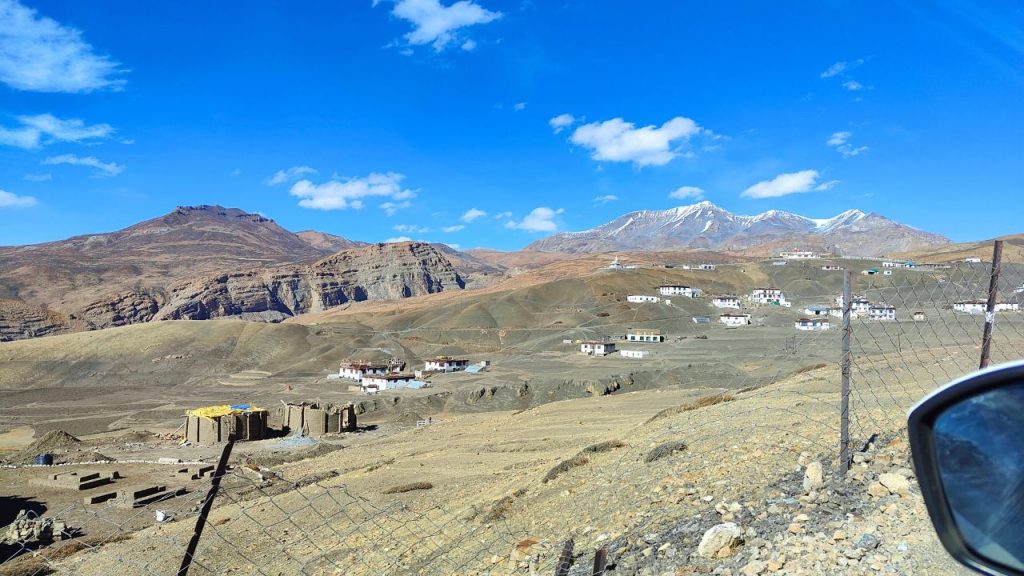
Langza village is located at an elevation of 14,500 feet above sea level in Himachal Pradesh’s western region. A majestic snow-covered mountain known as Chau Chau Kang Nilda (CCKN) serves as a backdrop to the village, almost like a stage curtain erected in the background. Against the deep blue sky, the CCKN peak, which means “blue moon in the sky,” stands out prominently on the skyline. Although it is more brown than green, some people correctly refer to Langza as the “Switzerland of Spiti.” Langza is a small paradise with patches of bright green fields scattered across brown hills. The landscape’s uneven slopy elevation adds to its picturesqueness. The 150 residents of the small village work hard to keep their ancient traditions and customs alive.
About Langza Village Location:
Langza village is a high-altitude village in Himachal Pradesh, India. Langza village, located only 16 kilometers from Kaza, the Spiti Valley’s administrative center, is still undiscovered, untouched, and off the beaten path. After gaining thousands of feet in a short time, the road climbs quickly through the wavering bends and ends up on a plateau. The plateau appears unusually green in comparison to its brown barren surroundings. The entire scene resembles a massive grassy garden. Beyond the landscape, the Chau Chau Kang Nilda peak, which stands at 20,000 feet, is the region’s tallest peak.
Langza Village’s History:
Most villages in Spiti have submerged under the ancient Tethys Sea millions of years ago, The Tethys Sea vanished when the Himalayan range appeared. Marine animal fossils from the Tethys Sea can still be discovered in the villages of Spiti Valley, particularly in Langza village. You can unearth the fossils in Langza if you have the proper digging tools and the time to search.
Activities in Langza Village include:
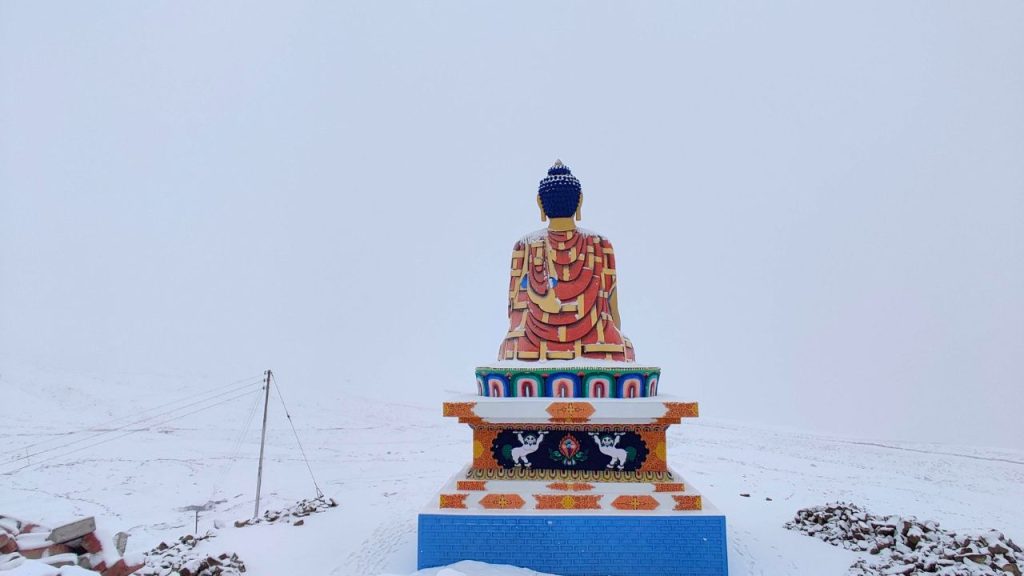
Pay a visit to the statue of Langza Buddha.
A massive Buddha statue guards the tiny hamlet of Langza. It is the village’s tallest structure, located atop a hill. The Langza Buddha statue is the most famous image of Langza or even the Spiti valley that you can find on the internet. After a 10-minute short hike from the parking area, you can reach the statue.
The wind was howling when we went to see the Langza Buddha Statue, making us shiver. All we could do was gaze in awe at the colorful statue, which stood alone in a beautiful valley surrounded by snow-capped mountains. From atop the hill, every nook and cranny was worth photographing. The villagers believe that the Buddha idol protects them from evil spirits, so they treat it with reverence.
Walk around looking for endangered species.
Because of its high altitude, Langza village is home to several endangered species such as snow leopards, Himalayan wolves, red foxes, and Ibex. These animals can be seen roaming around the village (Dec-Jan). Many tourists visit Langza village to see the big cat in its natural habitat, blanketed in thick white snow. You’ll need the assistance of a local guide to identifying the trails that these animals take. Having a local guide would also keep you safe.
Take photos of the breathtaking scenery.

Langza village is a photographer’s dream come true. Lanza’s landscapes are unlike anything you’ll see anywhere else. You can also see the milky way Spiti valley night sky with your naked eyes during the night. Several constellations can be easily identified in the absence of bright lights, providing excellent photographic opportunities. Because of the moonlight and glittering stars, the snow on the CCKN peak shines softly, providing another perfect opportunity to photograph star trails.
You can also walk around Langza village and see the Buddha statue from various perspectives. It’s stunning no matter where you photograph it. The light is bright and crisp during the daytime because of the village’s high altitude, and the sky is deep blue. The Buddha statue gives the area a unique magical feel. The Buddha statue is also a fantastic sunset spot, and you must visit during the golden hour.
Go on a fossil hunt
Langza is known as the ‘fossil village’ of the Spiti valley. Ammonites, spiral-shaped fossils, can be found in large numbers in and around the village. The village’s young children dig up the fossils and sell them to tourists as souvenirs. However, tourists should be aware that these fossils are archaeologically significant and, if removed, could jeopardize the region’s geological heritage. Langza village residents create mud replicas of fossils that can be purchased as souvenirs instead of the actual fossil collection.
In a homestay in Himachal Pradesh, you’ll be able to interact with the locals.
Most visitors come to Langza village as a day trip from Kaza, the closest town with lodging options. You should, however, stay in a local homestay in Spiti valley with the villagers if you want to truly experience the life of a Spitian and understand their culture and tradition. In Langza village, there are no other options for lodging than simple homestays. The mud, wood, and brick houses in the village help to keep the interiors warm even when it’s snowing outside. All of the homes have the same architectural style, are symmetrical, and are painted white.
It was decorated in a traditional style but included modern conveniences such as comfortable beds, a western toilet, a separate but clean bathroom, and hot water. Our hosts were delighted to give us a glimpse into their lives. It was difficult to leave them at the end of our short stay because they welcomed us with such warm hospitality and precious smiles.
Interact with the locals to gain a better understanding of their culture.
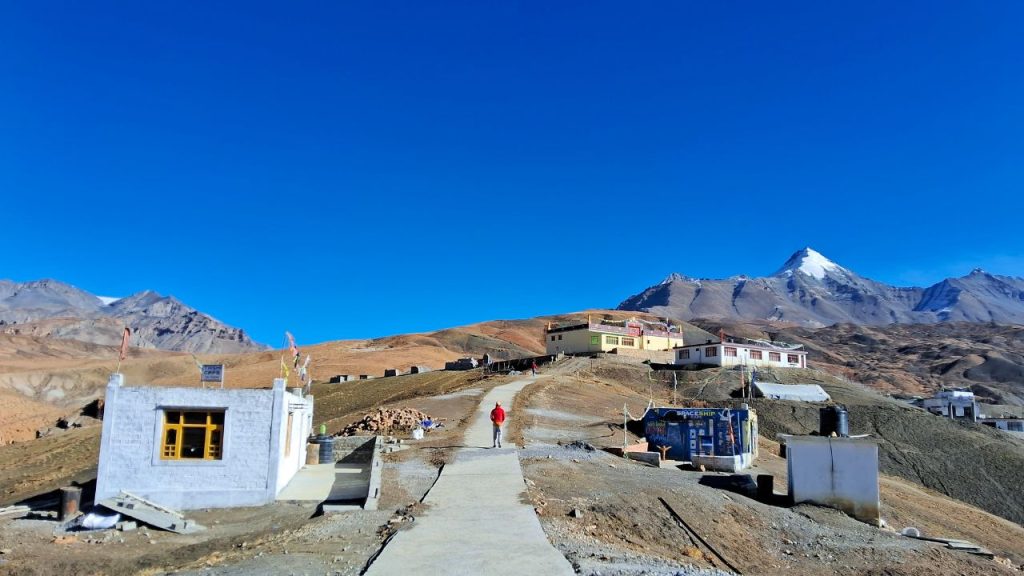
The locals’ lives in Langza village change dramatically as the seasons change. Our hosts at the homestay helped us understand Spiti a lot better. Every family in the town owns a piece of land in or near the village. During the summer, all of the villagers focus on their work. They work on their fields for crops such as barley, potatoes, and peas, or they rear their livestock or store dried food for the winter. Winter is a time to reap the summer’s hard work benefits. It’s the year to unwind, drink, celebrate, dance, and have a good time. Some teenagers work for trekkers as tour guides, tour operators, porters, or cooks. The people we met were amiable, humble, honest, and hardworking.
Indulge in some delectable Spitian cuisine.
Mealtimes allowed us to meet the host’s family at the homestays. Spiti bread, homemade butter, tomato chutney, farm potato, peas vegetable, and rice were among our hosts’ delicious home-cooked local delicacies. In the cold Langza weather, black tea and milk tea were served at all-day hours, providing us with comfort. While eating at Langza, we had some of our favorite moments.
Go to the temple in the neighborhood.
All the deities of Spiti Valley are said to reside in the local temple known as ‘Lang’ and protect the village from evil forces. Langza Gompa is another name for the temple.
Hike up to the lakes of Tsonyeti and Chumo.
Tsonyeti lake, at an elevation of 14,850 Spiti valley height in feet, is about an hour and a half hike from Langza village. It’s similar to a small pond that migratory birds visit in July and August. Chumo lake, at an elevation of 15,150 feet, is more significant than Tsonyeti lake. The steep hike to Chumo Lake takes about 2-3 hours. The Chau Chau Kang Nilda can be seen from the site of the Chumo lake.
Climb to the top of Chau Chau Kang Nilda (CCKN).
Only those with a lot of high-altitude trekking experience should attempt this. CCKN has become the most popular and frequently climbed peak in Spiti, attracting many climbers due to its proximity to the village of Langza, which is now connected to Kaza by a motorable road. Climbing CCKN requires the assistance of professional guides and porters. It is not a one-day trek and would necessitate several days of camping in adverse weather. If you aren’t an experienced trekker or don’t have much time, the view of the majestic CCKN peak from Langza village is worth seeing.
F&Q’s Langza Village
How old is Langza Buddha statue?
Himachal Pradesh, India, Langza, Kaza 7th of May, 2019 Langza, at an elevation of 14,500 feet, is home to a serene, giant Buddha statue. It is thought to be over 1000 years old.
Where is the Buddha statue in Spiti?
In the village of Langza in the Spiti Valley, Himachal Pradesh, India, there is a Buddha statue.
What is the altitude of Kaza?
Kaza, the Spiti District’s sub-divisional headquarters, is located on the left bank of the Spiti River at an elevation of about 12,500 feet above sea level. Steep ridges surround the village.
Which is the last village of Spiti valley?
Losar is a small Himalayan village in Himachal Pradesh’s Spiti Valley located for its cold desert climate.


